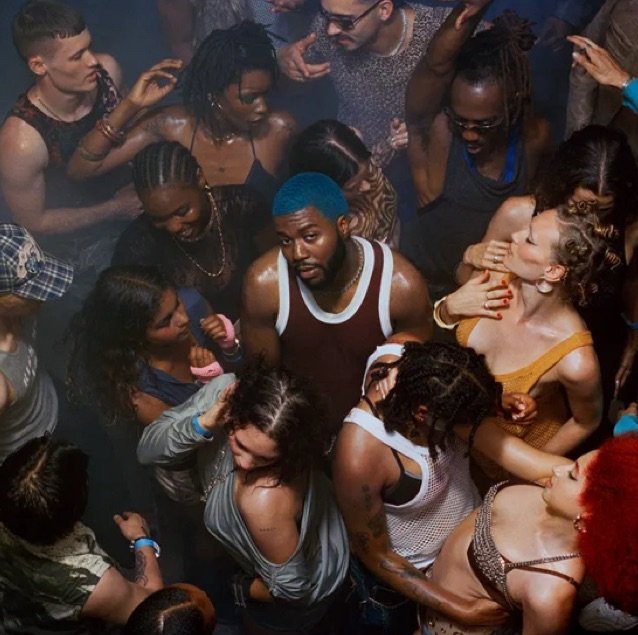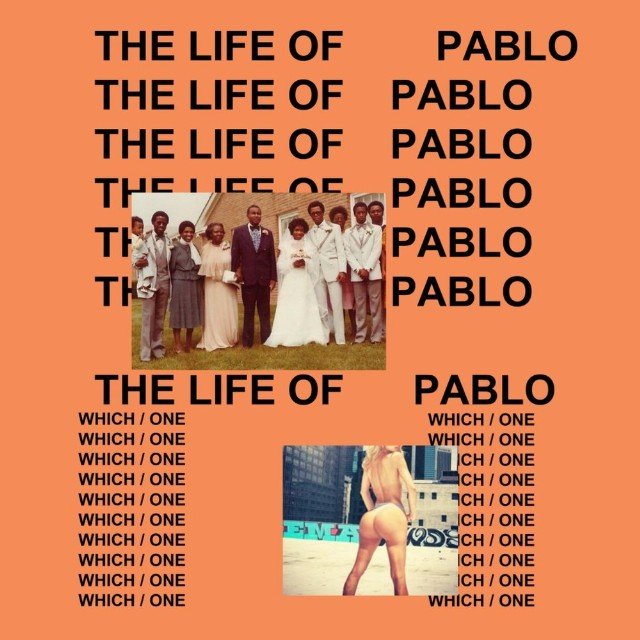
By all accounts, the Bad Boys franchise should be dead. When the first film was released in 1995, it was little more than a flashy-and-sleek drop in the bucket. It was a movie star vehicle directed by a young up-and-coming director eager to make a name for himself outside of music videos. But there was essentially a film that fit that same description released every other week in the ’90s. In retrospect, the first Bad Boys is far more notable now, as it served as an early indicator of the chokehold those involved, namely star Will Smith and director Michael Bay, would go on to have on pop culture at large in the decade that followed.
What made Bad Boys fairly run of the mill in 1995 is exactly what makes the franchise stand out all the more in 2024: an old-school sensibility in which the primary draw of the film for audiences is in seeing stars Will Smith and Martin Lawrence onscreen, playing off of one another comedically and engaging in adrenaline-fueled action sequences.
The new film, Bad Boys: Ride or Die, is largely more of the same, and your mileage will vary greatly depending upon what kind of reaction the prior films have elicited from you. After the somewhat surprising breakout success of 2020’s Bad Boys for Life, a fourth film was all but guaranteed, and Ride or Die holds true to what made the previous film work. In bringing back directors Adil & Bilall and pretty much the entire creative team alongside them, Ride or Die becomes a sequel bolstered by success. It doubles down both on more Bay-centric Bad Boys-isms and Adil & Bilall’s own distinctly frenetic sense of pacing and camerawork. The resulting work is a high-octane soap opera delivered at an absolutely breakneck pace.
TOP FIVE THINGS ABOUT “BAD BOYS: RIDE OR DIE“
5. Addressing the Elephant in the Room
In the past few years, Will Smith has become something of a controversial figure. In the years following the infamous 2022 Oscars broadcast, Smith has largely stayed out of the public eye. But with Ride or Die, his first theatrically released film since the slap heard around the world, Smith is in full-blown movie star mode. And more than that, Bad Boys: Ride or Die is a film entirely about the fallout of Smith’s actions on Oscar night.
The bulk of the narrative is devoted to Smith and Lawrence’s characters having to defend the honor of their late captain Conrad Howard after evidence comes out that links him unfavorably to the cartels. This results in a film full of people saying things like, “I’m not going to let you drag this man’s legacy through the mud.” In other words, just as the Captain Howard plot serves as a springboard narratively to launch into action setpieces with ease, so too does it serve to set up the film’s primary themes: redemption and preservation of legacy.
This becomes a point of even greater interest in the film’s final act, when the Captain Howard pretense is all but dropped to address the metatext directly. As Smith’s character struggles to pull through a panic attack, Lawrence’s character slaps him in the face multiple times and tells him, “Just because you do a bad thing doesn’t make you bad!” and tells him that he needs him to “get nasty.” In this moment, the subtext becomes text. Ride or Die is overtly grappling with Will Smith’s own offscreen persona through the thinnest layer of fiction imaginable, and it is deeply fascinating, even if perhaps more than a bit misguided.
It’s also worth noting how fitting it is that Mike Lowrey is the character through which Smith has found a vessel to return to the limelight and ultimately address this controversy. In a decades-spanning career full of family-friendly, non-cursing, peace-seeking characterizations in film, music, and press, Mike Lowrey and Bad Boys have long been a notable exception to the Will Smith rule. Lowrey swears, kills people, and shows little remorse for his actions. He’s a brash, harsh character and always has been. So, for as much as the slap recontextualized Smith’s public persona, Lowrey and Bad Boys prove to still fit him like a glove and afford him an opportunity to at least attempt to tackle the topic head-on.
4. Weak Spot: The Fast & Furious Approach
In attempting to modernize the Bad Boys formula without straying too far from the essence of the original Michael Bay-helmed films, it’s glaringly apparent that more than a few cues were taken from the ever-successful Fast & Furious franchise. And it’s understandable why: Fast & Furious began as an early-00s franchise as well, and it rose to meteoric success in the interim between Bad Boys 2 and Bad Boys for Life.
However, this formula is taken to exaggerated new heights in Bad Boys: Ride or Die, which, in its bid to keep the franchise alive, essentially incorporates the melodramatic soap opera storytelling that the latter Fast & Furious sequels have become known for. With illegitimate surprise children, team-ups with villains from previous films, a revolving door of celebrity cameos, and even a final scene of the characters as one great big family having a barbecue, Bad Boys: Ride or Die feels unmistakably cut from the same cloth as the Fast & Furious franchise.
To their credit, Ride or Die does handle elements of this with more care than Fast & Furious has in the past, especially when it comes to previously villainous characters working for redemption rather than instantly joining the team. But ultimately, fully embracing these tropes makes for a convoluted and messy narrative that does the film few favors.
3. Weak Spot: Martin Lawrence’s Afterlife
This aligns with the whole Fast & Furious-ification point, as essentially, the arc that Martin Lawrence’s character undergoes here mirrors the trajectory of Tyrese Gibson’s character in F9: surviving a near-death experience and concluding that he’s invincible. Granted, Tyrese’s arc in the later Fast & Furious films essentially echoes what Lawrence had already been doing for years prior, so seeing it come full circle like this is mildly amusing, but it doesn’t make it any more effective here than it was there.
In fact, it may be worse. Ride or Die has Lawrence’s character nearly die early on and chooses to fully depict his character’s journey into the afterlife in painfully trite detail. He speaks to ghosts, sees the future, and so forth. All of this is goofy enough, but the film then goes out of its way to essentially confirm and legitimize all of this as factual in its third act, adding a bewildering supernatural element to the series.
The way all of this impacts Martin Lawrence’s character for the rest of the film feels quintessentially Bad Boys-esque, but the full sequence and its dramatic implications feel markedly out of place when considered within any larger context.
2. Adil & Bilall’s Insane Direction
I appreciate Lawrence’s journey into death, primarily because directors Adil & Bilall seem to revel in it, throwing every idea at the wall to see what sticks. This applies to the film as a whole, and their unwavering, propulsive energy is infectious.
Teaming up again with cinematographer Robrecht Heyvaert, Adil & Bilall craft a visual style for Bad Boys: Ride or Die that is relentlessly inventive and frenetic. It’s a blend of their established, playful language, as seen in some early standout episodes of Ms. Marvel and their scrapped Batgirl movie, along with an engagement with Michael Bay’s work on the Bad Boys films and his more recent projects like AmbuLAnce.
The results are varied and wild, employing every trick imaginable and playing with visual form with childlike enthusiasm. From shots taken from the POV of objects like hot dogs or stopwatches to shots that transition in and out of computer monitors to establish visual connections between spaces, to hyper-dense drone shots, to attaching a quick-panning camera to Will Smith’s chest, Adil & Bilall pull out all imaginable stops here.
Does it always land? Not necessarily. Some of it can feel like busy visual work for its own sake, not always fully motivated by the film itself. However, they’re playing within the visual language in a way that few others are. If any franchise is suited to embrace such over-the-top visual trickery, it’s one birthed by Michael Bay.
1. Lorne Balfe’s Emotive Score
My hottest take on Bad Boys is that the secret weapon of the last two films has been Lorne Balfe’s incredible score. Balfe has become one of my favorite composers in Hollywood over the last few years, delivering remarkable musical work that enhances every film it accompanies, from Mission: Impossible – Fallout to Top Gun: Maverick to Bay’s own AmbuLAnce.
In Balfe’s operatic, deeply earnest, and openly emotional musical compositions, Bad Boys: Ride or Die finds the heart and soul of its story. Carried over from both the era the original two films were made in and Michael Bay’s distinct worldview, the Bad Boys films have never been graceful in handling the bromance at the franchise’s core. It’s inherently a series about two friends who love each other so much that they will go to the ends of the Earth for one another. Still, anytime there’s an expression of affection, it’s almost always immediately followed with sardonic ‘not gay, though’ humor. This approach, unfortunately, can often diminish the emotional stakes of the films, creating dissonance between the story and its delivery.
But it’s here that Balfe’s score soars. While the characters and writing may dismiss open emotionality, Balfe’s score doesn’t. It is driven by sincerity, making the film’s emotional beats work much better. Balfe’s score elevates the film, compensating for other elements’ shortcomings and lending the film a genuine authenticity in its emotionality.
RGM GRADE
(C)
Bad Boys: Ride or Die is a film with a surprising amount to chew on. While it is undoubtedly a blockbuster aimed at thrilling audiences on opening weekend, it’s also packed with thought-provoking elements from the actors and filmmakers. Not everything works; in fact, lots of stuff doesn’t. But even when it falters, it remains fascinating to witness. Plus, it features a finale set in a defunct gator-centric theme park, which significantly elevated the film in this writer’s estimation.
Discover more from RATINGS GAME MUSIC
Subscribe to get the latest posts sent to your email.










